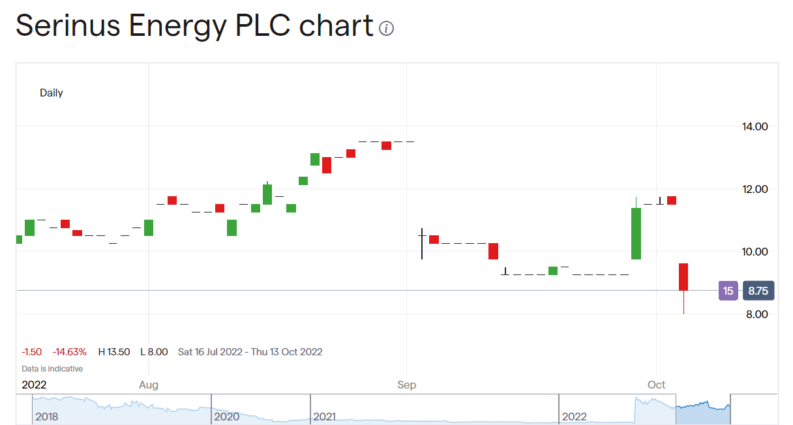Key points:
- Serinus Energy is down 24% on dry well in Romania
- There's still the work in Tunisia to do
- Junior explorers simply do carry this risk – that there's a dry well
Serinus Energy (LON: SENX) is down 23.91% – what we might call 24% among friends – on the report of another dry well. This time it's a gas well in Romania. There were indeed traces of gas down there but not enough to be worth exploiting. So, that's another well drilled, investigated and now done with. There is always, of course, the excitement of the next well or two to be drilled.
This being how junior exploration work does work out. We're in a relatively mature industry – conventional oil and gas here, this is not about fracking. There have indeed been improvements in both exploration and extraction in recent decades. So, as with metals and minerals mining it often is worth going back over old deposits, old fields, and seeing whether more modern tech can make the previously uneconomic pay off. The tactic is impeccable – if risky.
For returns do depend upon the wells being re-explored being amenable to the modern techniques. Or even to their having oil and or gas in them. That the Romanian gas well did not is what was reported today: “do not contain sufficient gas resources to justify proceeding” and the big point is not enough to even proceed with testing further. So: “The well will now be suspended. The cost of drilling the Moftinu Nord-1 well was US$867,000.” Well, this is how this stage of exploration works. Someone has to go drill the hole, stick the straw in and see what gets sucked up. Success is in finding more where there's gas and or oil and fewer where there isn't.

Also Read: Best Oil Stocks To Buy Right Now
This is just the way junior exploration companies work. As is this: “W-1 well will have mean gross initial production rate of 796 barrels of oil equivalent per day (“boe/d”), with the Company's net share being 358 boe/d.” That's in Tunisia and follows the state-owned drilling company actually turning up this time as it didn't last. Such juniors accepting that some wells won't work simply because however much exploratory work is done we never do get confirmation of economic extraction until that near $ million is spent on actually drilling. Which means that the failure of one well is followed by going and looking at another.
The effect of this for us as investors or traders is simply that there is no way to lay off this risk. More science doesn't work. More testing, more preliminary work doesn't. To play in this game it's just necessary to accept that there will be dry holes and that we'll have had to pay for finding out that it's dry.
The other side of this of course is that it's possible for a well to definitively overproduce as against expectations. That's what provides the upside to exactly these junior exploration companies. We have to be willing to accept these risks if we're to invest in them – this is just the nature of the beast.




